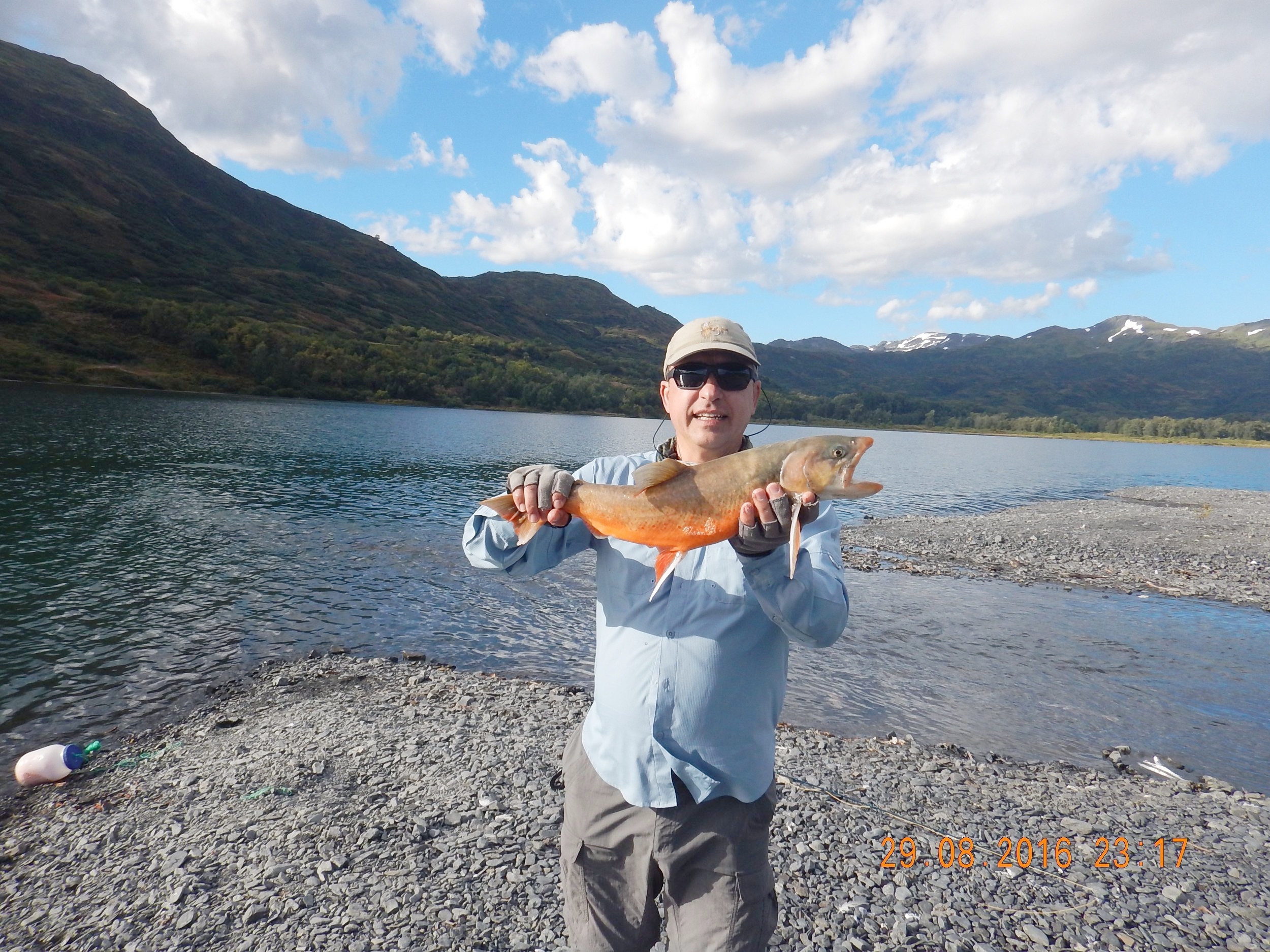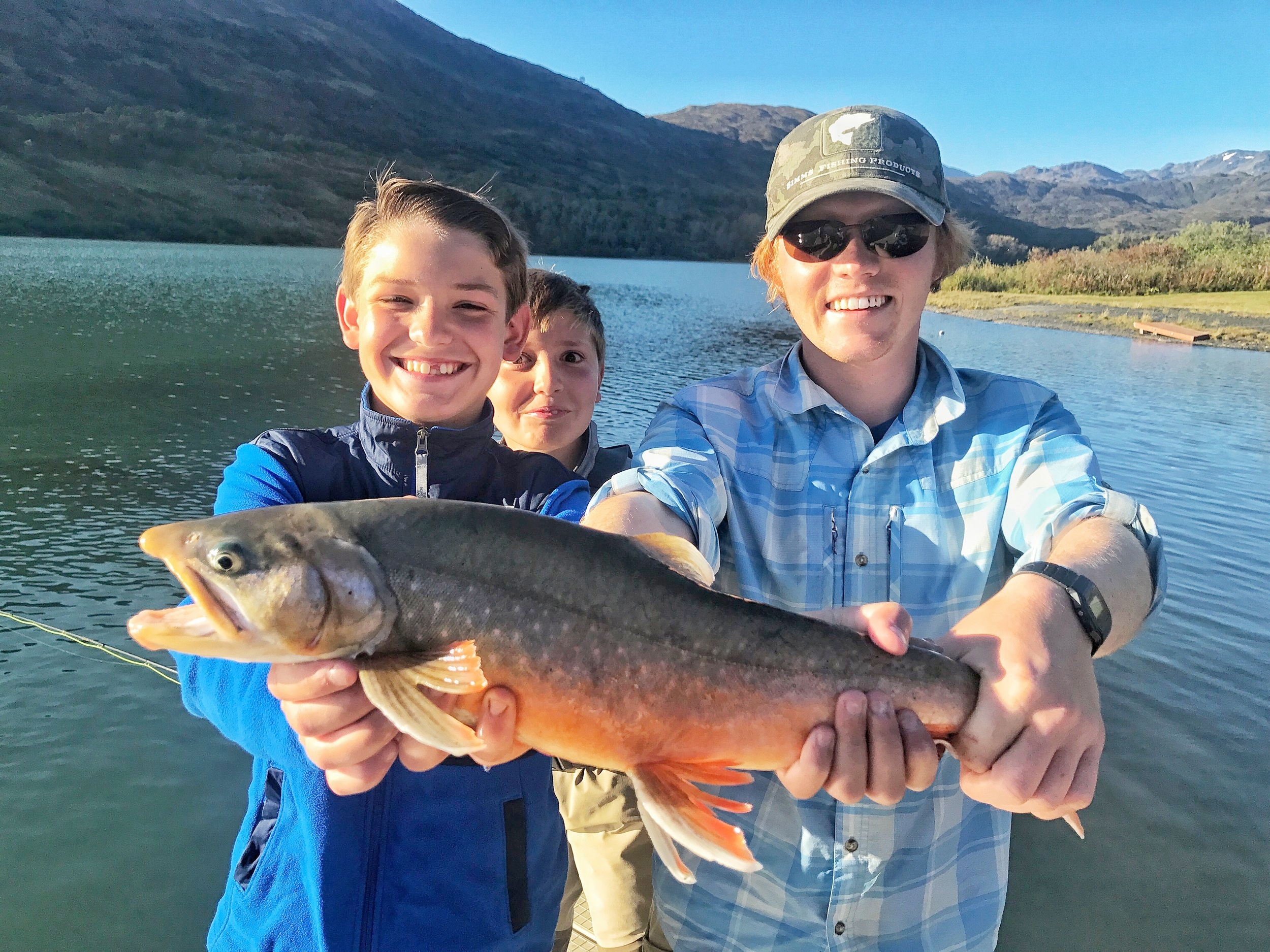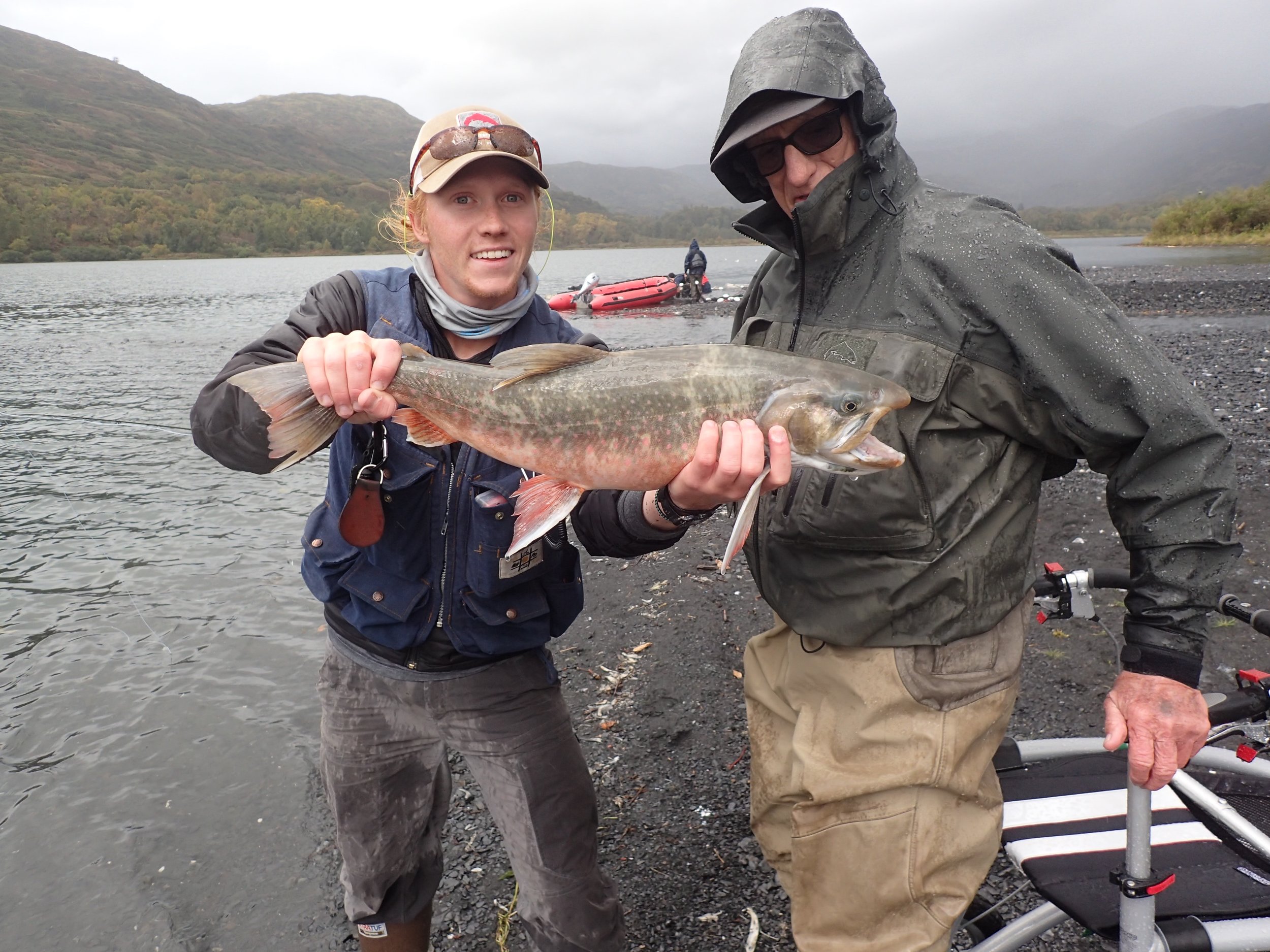



There has been a great deal of controversy surrounding the genetic subtleties that justify Arctic Char and Dolly Varden being considered separate species. Scientific consensus now endorses the separation, and when you catch both of them at Saltery (a near inevitability), you’ll agree.
Originally introduced to Saltery Lake in the floats of a plane in the early 70’s, our population of landlocked Arctic Char has grown to a respectable size. It is also Kodiak Island’s only known population of Arctics, and sometimes we cherish them almost as if they were pets. They can only be successfully fished from the Saltery property.
The Char live almost exclusively in the lake and are routinely caught off the dock and near the mouth of Lake Creek, making them a perfect target for after-dinner fishing. The “catch and release only” policy for Char at Saltery has been a huge success, and it is now not unusual to catch fish over six pounds.
The favorite method of fishing for Char is with beads and flesh flies. We might cheat a little bit by throwing some roe in the water to chum them up, but you're still using a fly! Even the smallest char fights like a bull shark, hugging the bottom and pulling with a strength totally disproportionate to its size.
Char are so much fun to catch that it’s common for anglers in the early part of the season to accidentally keep fishing for them until well past midnight. It’s hard to say what’s more enjoyable – the fish themselves, or standing on a gravel spit as evening sets in, Loon calls echoing across a glassy lake, The fiery orange of the 11:00 PM Alaskan sunset or the brilliantly red Sockeye salmon leaping into the air.
Although nobody comes to Saltery just to catch the Char, you may be surprised by how much you think about them after you return home.
Recommended Gear
FLY-FISHING
Rod: 4-6wt single-handed
Reel: 4-6wt normal or large arbor with good drag
Line: 4-6wt floating or sink-tip
Leader/tippet: 1X-2X mono or fluorocarbon
Flies: Size 6 to 4 Alaskan Omelettes, Polar Shrimp, BEADS, flesh flies (any smallish fly with shell pink or orange coloration will suffice; also any fly that has an enormous gob of salmon roe attached to it).
